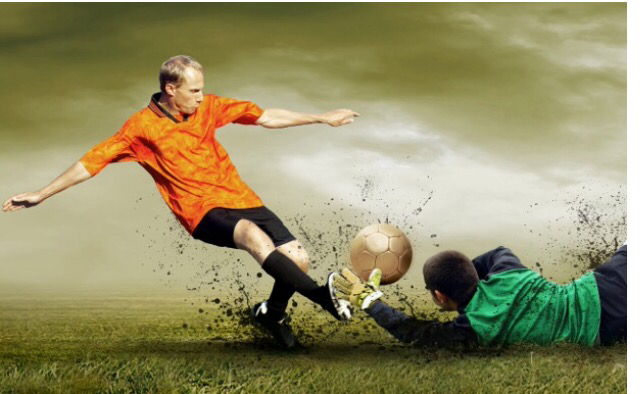— Domestication –A concept rooted in the Native American Toltec tradition. The elders recognized domestication, a system of behavior control based on reward and punishment, as the biggest obstacle to personal freedom for human beings. The following excerpt will explain domestication in more detail, as well as it’s counterpart, attachment.
Domestication
Let me begin to explain domestication with a simple story.
Imagine a child of eight or nine having lunch with his grandmother, who has prepared soup for their afternoon meal. They sit together and converse, enjoying each other’s company and the love they share.
After finishing half his bowl of soup, the child realizes he is full. “I don’t want the rest, Grandmother. I am full.”
“You must eat all your soup, Grandson,” she replies.

Whether you are a parent or not, it is likely clear what this boy’s grandmother is trying to do. Her intentions are admirable; she wants him to eat in order to be nourished. When he declines, she tries to convince him to eat more by offering him a reward for doing what she wants. This is the first tool of domestication.
“You must finish your soup,” she says. “It will make you grow up big and strong, like Superman!”
But the young boy is undeterred. “No, I am not hungry,” he insists. “I don’t want to eat any more right now.”
In addition to not being hungry, the child is also enjoying the feeling of asserting himself, because it feels powerful to say no, to express his free will. He can also feel that same sense of power when he says yes to the things he wants, and it feels good to say it. This is how young children (including ourselves when we were young) learn about the power of intent: by stating yes and no.
Eventually, the boy reaches the threshold of his grandmother’s patience, and when the carrot doesn’t work she reaches for the stick to impose her will upon him. Like many grandparents and their parents before them, she crosses the line of respect for his choice and adds punishment—in this case, guilt and shaming, which is the second tool of domestication.
“Do you know how many children don’t have anything to eat around the world? They are starving! And here you are, wasting your food. It’s a sin to waste food!”

Now the young boy is concerned. He doesn’t want to look like a selfish child, and he really doesn’t want to be seen as a sinner in his grandmother’s eyes. With a sense of defeat, he relents and subjugates his will.
“OK, Grandma, I will finish my soup.”
He begins to eat again, and he doesn’t stop until the bowl is empty. Then, with the tenderness that makes her grandson feel safe and loved, Grandma says, “That’s my good boy.”
The boy learns that by complying with the rules of the dream, he can earn a reward; in this case, he is a good boy in the eyes of his grandmother and receives her love and encouragement. The punishment would have been to be seen as a selfish child, a sinner in her eyes, and a bad boy.
This is a simple example of domestication in action. No one doubts that the grandmother has the best of intentions; she loves her grandson and wants him to eat his lunch, but the method she is using to achieve that goal has negative unintended consequences. Anytime guilt and shame are deployed as tools to provoke action, this counters any good that has been achieved. Eventually, these negative elements will resurface in one way or another.
In this case, let’s imagine that when this boy grows up, the domestication that occurred around this issue is so strong that it still has an imposing power over him well into adulthood. For instance, many years later he goes into a restaurant where they serve a big plate of food, and halfway through his meal his body signals to him the truth of that moment: I am full.
Consciously, or subconsciously, he hears a voice: “It’s a sin to waste food.”
Consciously, or subconsciously, he answers “Yes, Grandma,” and continues to eat.
Finishing his plate like a good boy, he responds to his domestication rather than his needs of the moment. In that instant, he completely goes against himself by continuing to eat after his body has already let him know that he is full. The idea is so strong that it overrules his body’s natural preference to stop. Overeating may damage his body, which is one of the negative consequences in this case of using guilt and shame as a tool. The other consequence is that he is experiencing internal suffering by reliving a past moment of guilt and shame, and it is controlling his actions in the present.
Finally, note that his grandmother is not even present in the current situation, as he has now taken up the reigns of domestication and subjugated his own will without anyone’s else’s influence. In the Toltec tradition we refer to this phenomenon as self-domestication. As my father likes to say, “Humans are the only animals on the planet that self-domesticate.”
The relationship between the boy and his grandmother forms a part of the Dream of the Planet, and the lunch between the grandmother and her grandson is a basic example of how domestication and self-domestication within the Dream occurs. The grandmother domesticated her grandson in that moment, but he continued to self-domesticate himself long after that. Self-domestication is the act of accepting ourselves on the condition that we live up to the ideals we have adopted from others in the Dream of the Planet, without ever considering if those ideals are what we truly want.
While the consequences of finishing a bowl of soup are minimal, domestication and self-domestication can take much more serious and darker forms as well. For instance, many of us learned to be critical of our physical appearance because it wasn’t “good enough” by society’s standards. We were presented with the belief that we weren’t tall enough, thin enough, or that our skin wasn’t the right color, and the moment we agreed with that belief we began to self-domesticate. Because we adopted an external belief, we either rejected or tried to change our physical appearance so we could feel worthy of our own self-acceptance and the acceptance of others. Imagine for a moment the many industries that would cease to exist if we all loved our bodies exactly the way they are.
To be clear, domestication regarding body image is different from wanting to lose weight in order to be healthy, or even having a preference to look a certain way. The key difference is that with a preference, you come from a place of self-love and self-acceptance, whereas with domestication you start from a place of shame, guilt, and not being “enough.” The line between these two can be thin sometimes, and a Master of Self is one who can look within and determine his or her true motive.
Another popular form of domestication in the current Dream of the Planet revolves around social class and material possessions. There is an underlying belief promulgated by society that those who have the most “stuff” or who hold certain jobs are somehow more important than the rest. I, for one, have never met anyone who was more important than anyone else, as we are all beautiful and unique creations of the Divine. And yet many people pursue career paths they dislike and buy things they don’t really want or need all in an effort to achieve the elusive goals of peer acceptance and self-acceptance. Instances such as these (and we can think of many others) are the ways in which domestication leads to self-domestication, and the result is that we have people living lives that aren’t their own.
Let me share an example of a close friend who was domesticated in this way, and how he broke free. From a very young age, my friend was encouraged by his family to become a lawyer. They filled his young mind with stories of money and power, and told him he had all the skills necessary to be successful in this endeavor. With the encouragement of his family, my friend studied pre-law in college and then went straight into law school. But shortly after he arrived, he found that he couldn’t stand the practice of law. In hindsight, he realized he had been domesticated to the idea that being an attorney was going to make him rich, powerful, and, most importantly, special in the eyes of his family, but the truth was that in adopting this path he was following their dreams instead of his own. When he announced to his family that he was dropping out of law school, many of them were disappointed and tried desperately to change his mind, but he was able to stay firm by relying on his own intent. That was many years ago, and he now chuckles when he remembers his former plans, as he is very happy in his current profession as an author and spiritual teacher.
This example illustrates how ideas that were planted in us as children and beyond often don’t reflect our preferred path. But, just like my friend, you have the power inside you to break free from any domestication that you’ve experienced, and the first step to doing so is becoming aware of that domestication and finding out what is true for you.
Lastly, I want to be clear that although I have been focused on the negative aspects of domestication, not all domestication results in negative consequences. In other words, just because an idea was planted in you via domestication doesn’t mean that the idea is a bad one and you must reject it. If it is consistent with your true preferences in life, that’s wonderful. For instance, if my friend had ended up enjoying the practice of law, then there would have been no reason to make a career change. Once you decide for yourself with a clear mind that a particular idea or belief works for you, there’s nothing wrong with maintaining it. The point is that you make a conscious choice.
Attachment
In its most basic sense, attachment begins with items in the world.You can see this in young children, around the age of two, when they first begin to associate and declare objects in their possession as “mine.” Anyone who has ever attempted to make a two-year-old part with a toy can attest to the power of attachment. Although this is where attachments to items begin, it certainly doesn’t end there, as often the more harmful attachments we hold are the unseen ones, and by this I mean our attachment to our own ideas, opinions, and beliefs.
Imagine that you like soccer. You don’t have a particular team or player that you root for, and it doesn’t matter if it’s taking place in a magnificent stadium or a dirt-filled field; both are equally good for a fan who just loves watching the game. The players could be great or mediocre and you wouldn’t care, as long as everyone playing is enjoying the game. As you watch, you generally don’t choose to root for or against one side, and even if you do choose to root for a particular team, you do so with very little emotional investment—just enough to make the game more exciting. As a result, regardless of which team wins the game, it has nothing to do with you personally, as you have not made rooting for a particular team a part of your identity. The moment the referee blows the whistle that ends the game—regardless of which team wins or loses—you leave the game behind. You walk out of the stadium and continue on with your life, having enjoyed a good game.

In this context, when you watch a game, you are simply enjoying a moment in time without any attachment to the outcome. You experienced the purest form of joy, stemming from your desire to experience the game for the sake of the game, or life without conditions. You maintained your personal freedom throughout the process, as the outcome of the game didn’t impact your life one bit.
Keeping with this analogy, let’s imagine that you like soccer, but now you are a committed fan of a particular team. Their colors strike an emotional chord inside of you. When the referee blows the whistle, the result of the game affects you on an emotional level. You are elated when your team wins; when your team loses, you feel disappointed.

Your attachment to your team begins to impact your personal life outside the stadium gates as you relate to the world as a fan. For example, when your team loses, you might have a bad day at work, argue with someone about what or who is responsible for the loss, or feel sad despite the many other good things going on around you. No matter what the effect is, you’ve let your attachment to a particular outcome change your persona. Your attachment to soccer bleeds into a world that has nothing to do with it.
If this attachment is left unchecked, it will become stronger and more entrenched, until the story of victory and defeat of your favorite team is now about you. Your team’s performance affects your self-worth. When reading the stats, you admonish players for making “us” look bad. If the opposing team wins, you get angry that they beat “you.” Not only have you brought the game home, but you have also completely incorporated the game into a part of who you are, shaping your identity by your belief of what it means to be a “real” fan.
Although the soccer team has nothing to do with you in reality, your self-importance correlates with the success or failure of this team because you chose to identify yourself with them in particular. Your life and your attachment to this team are so blurred that you can no longer separate the two, and you believe that anyone who doesn’t agree with you about this team is wrong. You might even begin to make loyalty to this team a condition by which you allow others to be in a relationship with you.

EIf you are having difficulty relating to the sports analogy, let’s consider two real-life examples. At the end of one soccer season in Europe, a big-name club was relegated into a lower division after a decisive loss. After witnessing this loss, a fan went home and hung himself. For him, life was no longer worth living if his team wasn’t in the Premier League. In another instance, a bus driver was a fan of a losing team, and he was so upset by a particular loss that he drove his bus into a group of people wearing the winning team’s jersey. Four people died for wearing the “wrong” colors. This man’s attachment to his team was so great that he killed for it. For these two people, the joy of watching soccer for the sake of soccer was lost long ago.
Fortunately, murder and suicide due to a favorite team’s loss are very rare occurrences. But when we turn to topics such as religion, politics, money, sex, and power, the negative consequences are far more numerous. When you become attached to an object, idea, or belief, you make it a part of who you think you are. Then, once the fog has you, your vision is obscured. You will no longer see the humanity of an individual who doesn’t agree with you, as you can only see the personification of an idea that you stand against.
When your mirror is clear, you can see the divinity in everyone. You can go to any church, synagogue, temple, mosque, or drum circle and find and feel the love and grace of God. For those who are lost in the fog, God just happens to be the focus of devotion that the religion is centered on; in other words, the beliefs and rituals of the religion are more important than experiencing God in the present moment. This is the power of unhealthy attachment.
Understanding the Relationship Between Domestication and Attachment
In the example of the soccer fan, an attachment arose out of something that was genuinely loved: the game of soccer. The fan allowed his love for the game to draw him into the fog, as he made the game part of his identity and confused his association with the team for who he really was.
In the example of the boy and his grandmother, the boy was domesticated to the idea that he must finish all his food, even though that idea wasn’t true for him. And as an adult, he adhered to the idea that he should finish his food even if his body is indicating something to the contrary. As a result, he is now also attached to that idea. The difference to understand is this: attachment doesn’t always come from domestication, but domestication left unchecked always leads to attachment. Here’s what the evolution from domestication to attachment looks like:
- Domestication. You are domesticated to an idea through interaction with others in the Dream of the Planet. (A grandmother domesticates her grandson to the idea that it’s a sin not to finish all the food on his plate.)
- Self-domestication. Once this idea is lodged inside you and accepted, it becomes a belief. You no longer need an outside domesticator to enforce this idea; you will do it yourself. This is self-domestication in action. (The grandson grows up and habitually finishes all the food on his plate even when he isn’t hungry.)
- Attachment. You are now attached to this belief, and depending on how strong your attachment is, your acceptance of yourself and others is contingent upon fulfillment of the belief. (The grandson feels guilty if he doesn’t finish the food on his plate; he admonishes his friends for not finishing their food, and he domesticates his children to the same idea.)
As you can see, attachments can often arise from domestication. The irony is that when this happens, you become attached to an idea that you didn’t even agree with initially but only adopted because of domestication. The end result is that without awareness, you will adhere to ideas that aren’t even true for you (as well as push them on others)!
Domestication and attachment work hand in hand to keep you separated from your Authentic Self, lost in the fog and smoke, trapped in the drama of the party. This cycle (domestication, self-domestication, attachment) can continue for generations until you transform into a Master of Self and break the chain. The following exercises will help you begin to identify your own domestications and attachments. Once you have recognized them, you can then decide if you are ready to let them go or not.
excerpts from “mastery of self”


